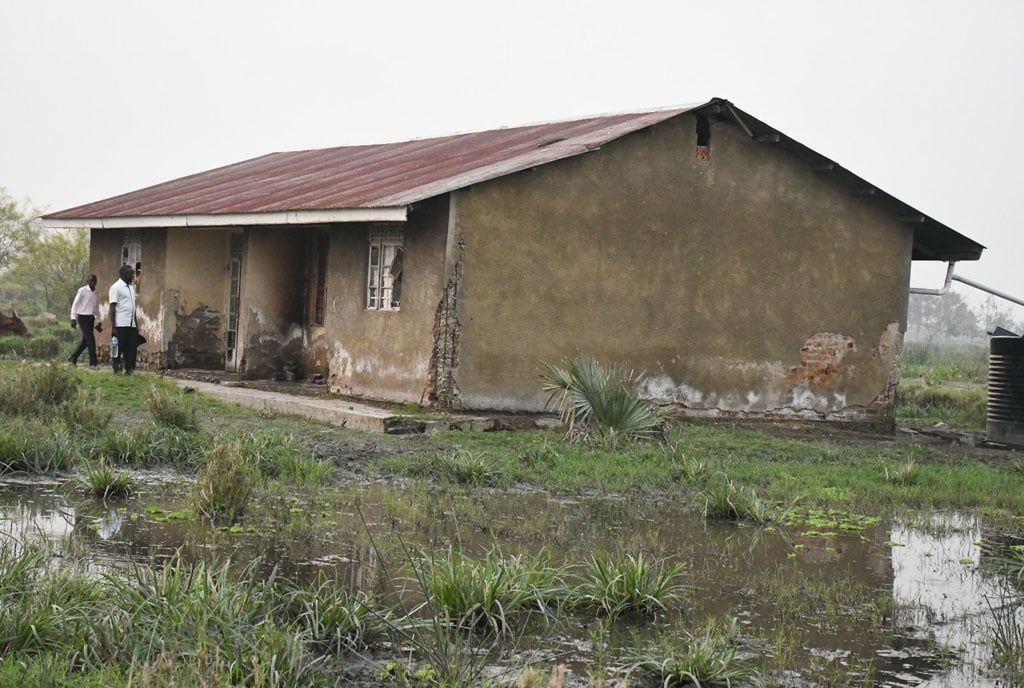Why Kasese pupils still study under makeshift structures

The abandoned classroom block at Mubuku Irrigation Scheme Primary School in Nyamwamba Division, Kasese Municipality on February 7, 2024. PHOTO | YOWERI KAGUTA
What you need to know:
- Since 2021 when the school authorities temporarily relocated the pupils to St Matia Mulumba Catholic Church, nothing has changed.
As schools opened for their first term, Mubuku Irrigation Scheme Primary School, a government-aided school in Nyamwamba Division, Kasese District has, for the third year in a row, not returned to its original premises. The school continues to occupy make-shift structures.
Since 2021 when the school authorities relocated the pupils to St Matia Mulumba Catholic Church due to low enrolment, nothing has changed.
The decision to relocate learners and abandon the old school structures, in collaboration with Kasese Municipality leaders, was after the school registered a sharp decline in the enrolment of pupils from Primary One to Primary Seven.
Before this arrangement, the school operated solely as a private institution and had no government affiliation. With the migration of the school to the church land, the nursery section was never integrated into the primary school.
However, it remains uncertain if the school will return to its original premises.
Ms Jovia Bamwikirize, the head teacher, said the decision to relocate Mubuku Irrigation Scheme Primary School was majorly driven by the low enrolment of pupils in its original location.
She said St Matia Mulumba Catholic Church became an attractive alternative as it provided ample land and was situated within a community with a sizable population, which by the end of the third term saw pupil enrolment, which previous was only 28 at the original premises, increasing to more than 220.
“The decision was influenced by the practical challenge of school teachers struggling to maintain regular attendance in the absence of pupils. There was a suggestion by Kasese Municipality Council that this school be relocated from here to another place,” she explained.
The Kasese Municipal Principal Education Officer, Mr Seith Ahebwa, said the decision to relocate the school stemmed from the school’s inability to attract learners.
“The school is there because we did not transfer the buildings but the school failed to attract learners. After relocating it, the enrolment has since increased,” he said.
Mr Ahebwa proposed that the existing infrastructure of the abandoned school be turned into an agriculture training facility because of its proximity to the Mubuku Irrigation Scheme.
“This new school location has increased enrolment since it was a demand-driven aspect from the community. The other place can be used for other studies such as agricultural training,” he said.
Mr Rabson Mupango, the Kasese Municipality deputy mayor, said the proposal to transform the school building structures into an agriculture training institute is still a pending discussion by the committee of social services in the municipality council.
Mr Girivazio Bwambale, a former head teacher at the school, who served from 2013 to 2016, said when he took over the management in 2013, the enrolment was only 67 learners due to reasons such as political instability, among others.
“In 2013, when I was transferred to that school, Allied Democratic Forces rebels had struck Kasese District and farmers ran away from the irrigation scheme. They decided to come and stay on the Kasese-Fort Portal Highway, fearing that the rebels might strike from the Queen Elizabeth National Park, which is neighbouring the irrigation scheme,” Mr Bwambale said.
He rejected the proposal of converting the school into an agriculture training facility, saying the local leadership should instead focus on mobilising the community to encourage the return of learners to the school.
The families that had shifted from the irrigation scheme and settled in Kigoro and Majengo on the Kasese-Fort Portal Highway opted to enroll their children in schools near their new residences.




